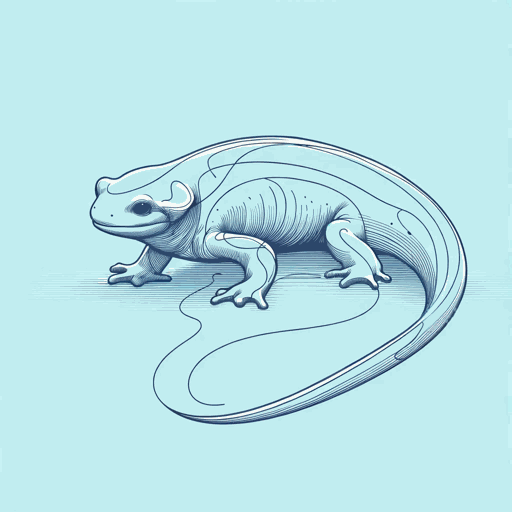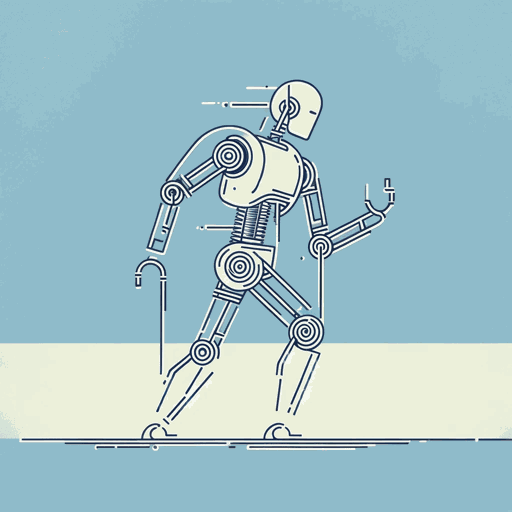53 pages • 1 hour read
Karel ČapekWar with the Newts
Fiction | Novel | Adult | Published in 1936A modern alternative to SparkNotes and CliffsNotes, SuperSummary offers high-quality Study Guides with detailed chapter summaries and analysis of major themes, characters, and more.
Summary and Study Guide
Overview
War with the Newts by Karel Čapek was originally published in Czech as Válka s Mloky in 1936. The novel has been adapted as a play and a musical, including Kenny Murray and Ken Campbell’s 1981 theatrical version and the 2005 BBC Radio adaptation. Čapek is known for his play R.U.R. (1921), which introduced the word robot to science fiction. He also published several novels before War with the Newts.
Čapek’s experience as a journalist can be seen in the theme How Newspapers Inform and Confuse in War with the Newts. It is a work of classic science fiction with utopian elements that also examines The Horrors of Slavery and The Problems With Nationalism. The title is sometimes translated as The Salamander Wars; the titular salamanders learn to talk, read, and use tools.
This guide cites the 1985 edition of M. and R. Weatherall’s translation, originally published in 1937.
Content Warning: The source material includes language that is antisemitic, including parodic criticisms of white nationalism and Nazism. In its parody of other forms of nationalist prejudice, the text includes negative stereotypes of Cuban and Batak people. The source material also includes discussions of slavery and violence against Black people—including lynching.
Plot Summary
Captain van Toch travels to the island of Tanah Masa, and discovers salamanders, or newts, there. The locals call these lizards—which are the size of a 10-year-old human—devils and their home Devil Bay. There, Captain van Toch discovers that the newts can learn how to harvest pearls (See: Symbols & Motifs), as well as learn how to speak, and wants to use them in a pearl-collecting business.
Czech newspaper editors named Golombek and Valenta visit van Toch, looking for a personal interest story. Van Toch says he needs investors for a new ship to bring his business idea to life. They suggest he see G. H. Bondy. When the captain arrives at Bondy’s, the butler, Povondra, shows the captain in to see Bondy after some internal debate. Bondy, impressed by the captain’s pearls and story about the newts, agrees to fund his business, founding the Pacific Export Association. Captain van Toch travels around with his trained newts, collecting many pearls.
A group of filmmakers—Abe, Li, Fred, and Judy—encounter the talking newts during a yachting trip. The novel then includes a scientific report about the newts which classifies them as Andrias Scheuchzeri, a type of salamander thought to be extinct. At the London Zoo, a newt on exhibit, called Andrew Scheuchzer, or Andy, talks to the Reptile House keeper, Greggs. Greggs teaches it to read the newspapers. Povondra takes his son, Frantik, to a fair where someone claims to be Captain van Toch and has a talking newt. Press coverage of the newts causes a reader to send in an old, but undated, article about the newts.
After the Captain dies, Bondy dissolves the Pacific Export Association and creates the Salamander Syndicate. This organization sells the newts as an enslaved labor force. An appendix describes the mating habits of the newts. The female newts do not need the male newts to reproduce, but only a chemical they release. This means the newts do not have paternity, and the males live as a collective that dances on the full moon.
Povondra collects newspaper clippings about the newts, and the narrator uses these documents to create the Annals of the Newts. The newts build new islands and other forms of underwater construction, as well as defend coastlines for humans. There are a variety of labor issues surrounding the newts. Many people who sell newts do so from a distance. Most newts are bred on farms, but some are captured from the wild and sold into slavery.
Reporters become concerned about the scientific experiments conducted on newts to discover what conditions they can survive. In one experiment, for instance, the scientists figure out how to purge the poison from a newt and are able to eat it. Famous figures, like G. B. Shaw and Mae West, comment on the newts in the papers. A Czechoslovakian man reports on an encounter with a newt that learns to speak Czech. Women’s clubs become interested in the causes of educating and clothing the newts. There are debates about what the newts should learn and about the newt dances during the full moon.
There are fences put up along the coastlines to separate the newts from the humans, and newts are lynched. The Catholic church makes a prayer for newts, and Protestants preach at the fence. Some humans form a sex cult around salamanders, and some newts worship Moloch. Various political and social groups use newspaper manifestos to ask the newts to join them. While newts create their own systems of education, humans mostly refuse to cite them. However, a newt is invited to an academic conference in Nice. The League of Nations sets up a committee to investigate the issues surrounding newts, but it only focuses on what to name the newts as a collective.
Newts are reported to have a generational divide, as well as their own press. They do not make their own art, or what humans consider art. Society’s focus becomes quantity over quality in the Newt Age. A conference about newts is held in London, deliberating over the use of newts in combat, and the political figures involved come up with an international agreement.
After many years of collecting newspapers, Povondra hears about violent conflict between newts and humans. He begins to regret permitting Captain van Toch to see Bondy. On the Cocos Islands, newts defend themselves against pirates trying to capture them and sell them into slavery. This causes the humans to retaliate, attacking newts during their moon dance. In Normandy, while newts raid orchards, children attack a newt, and the newt sets off an explosion which kills them all. A French cruiser threatens the newts, but they blow it up. Eventually this leads to newts being given apples and wine so they don’t have to raid orchards.
In the English channel, there is an explosion that kills newts and humans. The English think the French are responsible, and vice versa. Their conflict is eventually resolved with a treaty that adds a neutral band underwater between the nations. The German press argues that the Baltic newt is superior to other newts, but newts don’t recognize nations among themselves. A philosopher writes about a newt utopia beginning as the human era ends, due to the unity of the newts. Human artists begin to idealize the newts and create art about them. A pamphlet called X’s Warning advocates for disarming the newts and not using them for labor. However, governments refuse to do these things.
The newts set off explosions, which seem to be earthquakes, to make more coastline (which is the only place newts can live). The first earthquake is in Louisiana, and the newts take responsibility for it on a radio broadcast a few days later. They explain their plans to make more coastlines, advise humans to head for the mountains, and play music humans wrote about newts.
A conference is held at Vaduz with representatives from human nations and human representatives of the newts. England does not participate because the newts have set up a blockade around it. The newts offer money for land to blow up, and the western nations offer to sell China. Povondra, who gave up collecting newspaper clippings and has taken up fishing, feels guilty and responsible for the state of the world as newts sink various countries. His son holds everyone responsible. Povondra and his son see a newt in a river in Czechoslovakia.
The author debates with himself about the dreary ending. He wonders if there is a way that humans can survive. He speculates that humans will have to work for the newts. He considers if newts could create nations and turn against one another. If the different newt nations killed each other, the humans could someday rebuild their societies. However, the author is not sure what could come next.


